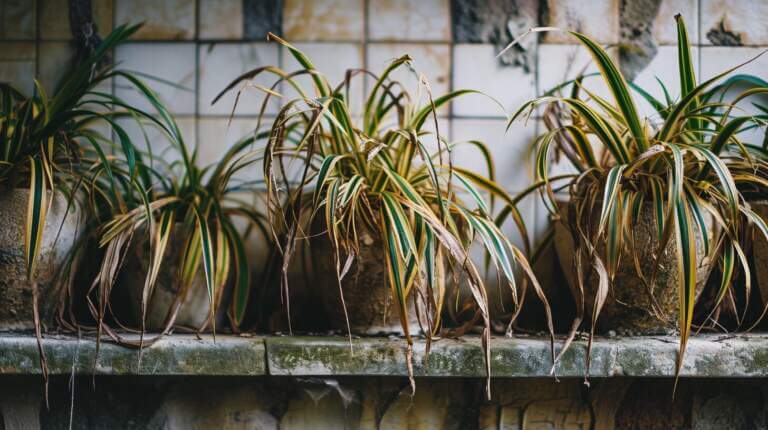What To Do If Your Dog Eats A Philodendron Plant: Philodendrons Poisoning Safety Tips
Discovering that your beloved furry friend has ingested a philodendron plant can be a distressing situation. Philodendrons are common household plants, but they can be toxic to dogs.
In this article, we will provide you with informative and thorough safety tips on what to do if your dog eats a philodendron plant. From recognizing the signs of philodendron poisoning to taking immediate steps and contacting a veterinarian, we will guide you through the necessary actions to ensure your pet’s well-being.
Stay informed and prepared to protect your canine companion.
Key Takeaways
- Signs and symptoms of philodendron poisoning in dogs include drooling, pawing at the mouth, difficulty swallowing, vomiting, and diarrhea.
- Seek immediate veterinary attention if you suspect ingestion or notice these symptoms, as severe cases may lead to respiratory distress, rapid breathing, and collapse.
- Immediate steps to take if your dog eats a philodendron plant include removing any remaining plant material from their mouth, contacting your local emergency vet or animal poison control center, monitoring your dog for signs of distress, and keeping them calm and comfortable until professional help is available.
- When calling the veterinarian, they may recommend inducing vomiting, rinsing the mouth, administering activated charcoal, and providing supportive care. Follow their instructions carefully for the best outcome, and consult with them before attempting any home remedies or first aid measures.
Signs of Philodendron Poisoning in Dogs
The signs of philodendron poisoning in dogs can vary depending on the severity of the ingestion and the individual dog’s reaction. Philodendrons contain calcium oxalate crystals, which can cause irritation and swelling in the mouth, tongue, and throat.
Common symptoms of philodendron toxicity in dogs include drooling, pawing at the mouth, difficulty swallowing, vomiting, and diarrhea. In more severe cases, dogs may experience respiratory distress, rapid breathing, and even collapse.
If you suspect your dog has ingested philodendron or is showing any of these symptoms, it is important to seek immediate veterinary attention. Treatment options for philodendron poisoning may include rinsing the mouth with water, administering activated charcoal to absorb any remaining toxins, and providing supportive care such as intravenous fluids.
Prompt medical intervention can greatly improve the chances of a successful recovery for your furry friend.
Immediate Steps to Take if Your Dog Eats a Philodendron Plant
Upon discovering that your dog has ingested a philodendron plant, it is crucial to take immediate steps to minimize the potential harm and ensure their safety. Here are four important steps to follow:
- Stay calm: It’s natural to panic, but staying calm will help you think clearly and make better decisions.
- Remove the plant: If there are any remaining leaves or pieces of the philodendron plant in your dog’s mouth, carefully remove them to prevent further ingestion.
- Call the emergency vet: Contact your local emergency vet or animal poison control center immediately for guidance. They will provide you with specific instructions based on your dog’s size, the amount ingested, and their overall health.
- Monitor your dog: Keep a close eye on your dog for any signs of distress, such as vomiting, diarrhea, or difficulty breathing. Provide them with plenty of fresh water and try to keep them calm and comfortable until you can seek professional help.
Calling The Veterinarian: What To Expect If Dog Has Eaten Part Of The Plant
When calling the veterinarian after your dog has ingested a philodendron plant, you can expect to receive immediate guidance and instructions on how to proceed. The veterinarian will likely ask you questions about the situation, such as the size of the plant your dog ate and the amount ingested. They may also inquire about your dog’s size, weight, and any pre-existing health conditions. Based on this information, the veterinarian will provide you with tailored advice on the next steps to take.
They may recommend inducing vomiting or bringing your dog in for an examination. During the veterinarian consultation, they will discuss potential treatments, such as administering activated charcoal to absorb any toxins. It is crucial to follow their instructions carefully to ensure the best possible outcome for your furry friend.
Home Remedies And First Aid For Philodendron Ingestion
If your dog ingests a philodendron plant, there are several effective home remedies and first aid measures that can be taken to alleviate any potential symptoms or discomfort. Here are some steps you can take to help your dog if they have ingested a philodendron plant:
- Remove any remaining plant material: If you catch your dog in the act of eating the philodendron, try to remove any remaining plant material from their mouth to prevent further ingestion.
- Induce vomiting: If your dog has ingested a significant amount of the plant, you can try to induce vomiting by giving them hydrogen peroxide. However, it’s important to consult with your veterinarian before attempting this.
- Offer activated charcoal: Activated charcoal can help absorb any toxins in your dog’s system. Consult with your vet to determine the appropriate dosage.
- Monitor your dog: Keep a close eye on your dog for any signs of illness or discomfort. If you notice any concerning symptoms, contact your veterinarian immediately.
Preventing Future Incidents: Dog-Proofing Your Home With Philodendron Plants
To effectively prevent future incidents, it is essential to regularly and thoroughly dog-proof your home by implementing measures that specifically address the presence of philodendron plants. These plants can be toxic to dogs, so it is important to find alternative plants that are safe for them. Consider incorporating dog-friendly houseplants such as spider plants, Boston ferns, or African violets into your home. These plants not only add beauty to your space but also provide a safe environment for your furry friend. To make it easier for you, here is a table showcasing some alternative plants for dog owners:
| Plant Name | Benefits | Care Level |
|---|---|---|
| Spider Plant | Purifies air, non-toxic to dogs | Easy |
| Boston Fern | Adds humidity to the air, safe for dogs | Moderate |
| African Violet | Beautiful flowers, non-toxic to dogs | Easy |
Frequently Asked Questions
Can Philodendron Plants Thrive in Low Light Conditions?
Philodendron plants, known for their lush green foliage, can indeed thrive in low light conditions. To ensure healthy growth, here are some tips for healthy philodendron plants: firstly, choose a variety that is better suited for low light environments. Next, place your philodendron near a window with indirect sunlight, as direct sunlight can scorch its leaves. Lastly, avoid overwatering and provide adequate humidity by misting the plant regularly. These simple steps can help your philodendron thrive even in low light conditions.
Can Philodendron Plants Cause Drooping Leaves in Dogs?
Can Philodendron plants cause drooping leaves in dogs? While these plants are generally safe for dogs, if they consume large amounts, it can lead to gastrointestinal upset. If your dog experiences drooping philodendron leaves or any other symptoms after ingesting the plant, consult your veterinarian on how to treat drooping philodendron leaves promptly.
Can a Philodendron plant be harmful to dogs if they eat it?
Yes, a Philodendron plant can be harmful to dogs if they eat it. Dogs ingesting its leaves can experience gastrointestinal upset like vomiting and diarrhea. It’s important to keep pets away from these plants to avoid any potential risks. Preventing philodendron leaf yellowing can be achieved by providing adequate sunlight, watering, and ensuring proper drainage.
Can Dogs Eat Any Part of a Philodendron Plant?
Dogs should not be allowed to eat any part of a philodendron plant, as it can be potentially dangerous for them. Philodendron leaves contain insoluble calcium oxalate crystals, which can cause irritation and inflammation in the mouth, throat, and gastrointestinal tract of dogs.
Ingesting these plants can lead to symptoms such as drooling, vomiting, and difficulty swallowing. It is important to keep philodendron plants out of reach of dogs to prevent any potential harm.
How Long Does It Take for Symptoms of Philodendron Poisoning to Appear in Dogs?
The timeline of symptoms and the treatment options for philodendron poisoning in dogs are important factors to consider. It is crucial to understand how long it takes for symptoms to appear after ingestion and what steps can be taken to address the situation.
Are All Species of Philodendron Toxic to Dogs?
Not all species of philodendron are toxic to dogs. However, it is important for pet owners to be aware that certain varieties, such as the commonly found Philodendron bipinnatifidum, can be harmful to dogs if ingested.
To ensure the safety of your dog, it is recommended to research dog-friendly houseplants and consider incorporating them into your home.
Additionally, taking preventative measures such as keeping plants out of reach and providing alternative chewing options for your dog can help prevent them from eating houseplants.
Can Philodendron Poisoning Be Fatal for Dogs?
Philodendron poisoning can potentially be fatal for dogs if left untreated. When a dog ingests philodendron leaves or stems, it can result in a range of symptoms, including vomiting, diarrhea, drooling, and difficulty swallowing. The severity of the poisoning depends on the amount ingested and the size of the dog.
It is crucial to seek immediate veterinary attention if your dog has consumed philodendron to prevent any life-threatening complications. Early intervention and proper treatment can greatly increase the chances of a positive outcome.
Are There Any Long-Term Effects on a Dog’s Health After Ingesting a Philodendron?
Ingesting a philodendron plant can have potential long-term effects on a dog’s health. The toxic compounds present in philodendron plants can cause gastrointestinal issues, such as vomiting and diarrhea, which may subside with timely intervention.
However, if left untreated, these complications can lead to dehydration and nutrient deficiencies, impacting the overall well-being of the dog. It is crucial to promptly seek veterinary assistance to ensure proper treatment and minimize any potential long-term consequences on the dog’s health.
Are philodendrons poisonous to dogs?
Yes, philodendrons are poisonous to dogs. They contain calcium oxalate crystals which can cause irritation in the mouth, drooling, vomiting, and difficulty swallowing.
What should I do if my dog ate philodendron plant?
If your dog has eaten a part of the philodendron plant, it’s important to contact your vet immediately. They can provide guidance on the next steps for treatment.
Are philodendrons toxic to cats as well?
Yes, philodendrons are toxic to cats. Similar to dogs, cats can experience irritation, drooling, vomiting, and difficulty swallowing if they ingest the plant.
What are the clinical symptoms of philodendron poisoning in pets?
Clinical symptoms of philodendron poisoning in pets may include drooling, pawing at the mouth, oral pain, decreased appetite, and vomiting.
How can I keep philodendron away from cats?
To keep your philodendron away from cats, consider placing the plant in a location that your cat cannot reach. Cats don’t like citrus smells, so consider using citrus peels or citrus-based sprays as deterrents.
What does a heartleaf philodendron look like?
The heartleaf philodendron is an indoor plant known for its heart-shaped leaves. It’s a popular choice for many pet owners due to its attractive appearance.
Are all parts of the philodendron plant toxic to pets?
Yes, all parts of the philodendron plant are toxic to pets. This includes the leaves, stems, and roots.
What should I do if my pet may have ingested a toxic plant?
If your pet may have ingested a toxic plant like a philodendron, it’s important to contact your vet immediately. They can provide guidance on the next steps for treatment.
What types of plants are safe for dogs and cats?
There are many types of plants that are safe for dogs and cats. These include spider plants, Boston ferns, and certain types of palms. Always check with your vet before introducing a new plant into your home.
How can I prevent my dog or cat from eating my philodendron?
To prevent your dog or cat from eating your philodendron, consider placing the plant in a location that your pet cannot reach. You can also train your pet to avoid certain areas or use pet-safe deterrents.







